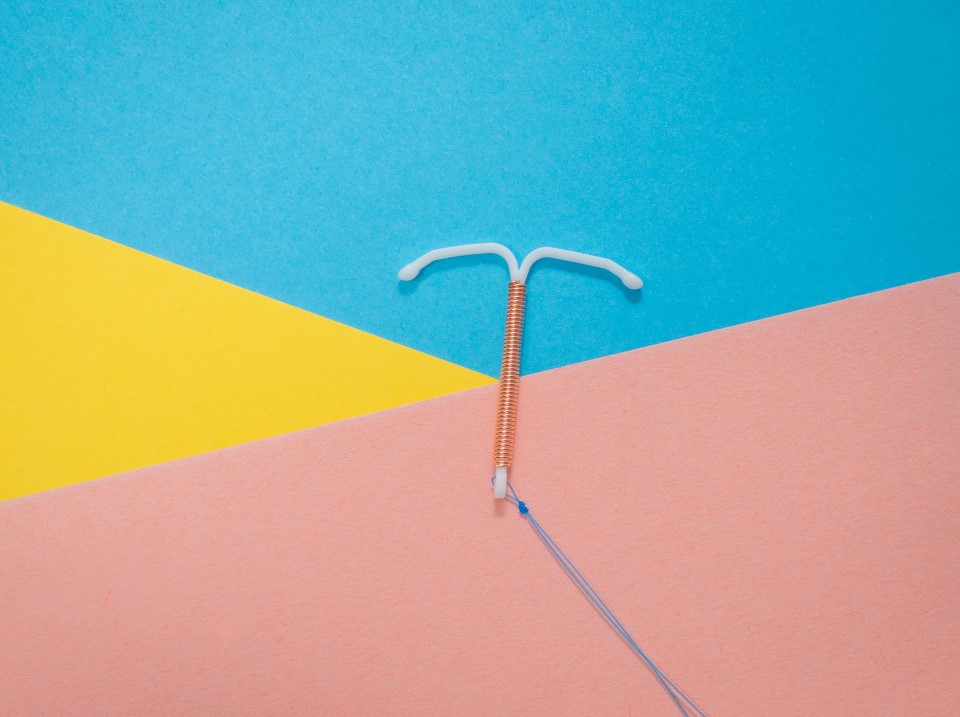- Uterine fibroids are non-cancerous outgrowths within a uterus.
- Genetics changes, obesity and family history are the risk factors for fibroids.
- Estrogen overload might be the primary cause of uterine fibroids in females.
- Natural remedies can cure fibroids completely and there are no two ways about it.
- Healthy and balanced foods are the surefire remedies for fibroids.
- Enhancing your liver function and detoxifying can help you cure uterine fibroids naturally.
Women’s bodies are truly miraculous, allowing us to experience sexual satisfaction, grow children, and sync our menstrual cycle with our loved ones or the moon. But these impressive organs are also susceptible to unique health challenges, including vaginal infections, miscarriages, and fibroid growths, or noncancerous muscle growths in organs such as the uterus. Fibroids can be uncomfortable, and many people seek medical treatment for them. However, advances in research surrounding natural fibroid treatments is helping many women avoid more invasive fibroid treatment, like surgery, while improving their overall wellness.
What Are Uterine Fibroids?
Uterine fibroids, which are also called leiomyomas or myomas, are noncancerous growths in the uterus. (1) They usually occur when a woman is between the ages of 15 and 44. Fibroids can be small, like a seed, or large, like a grapefruit. Depending on the size, a fibroid may enlarge or distort the uterus. Fibroids are typically composed of fibrous connective tissue and smooth muscle cells.
Uterine fibroids are very common; in fact, about 26 million women in the United States have uterine fibroids, although many are asymptomatic, meaning they don’t experience any symptoms of fibroids. (2) By age 49, over 70% of white women and 84% of black women have been diagnosed with a uterine fibroid at some point.
Types of Fibroids
Uterine fibroids typically fall into one of three groups depending on where they grow. They may appear either in the:
- Uterine cavity. Fibroids that develop in the uterine cavity are called submucosal fibroids. These are the least common types of fibroids.
- Uterus wall. Fibroids developing in the uterine tissue, called intramural fibroids, are the most common type of fibroid. This larger fibroid can stretch your womb, depending on the size.
- Outside the uterus. Fibroids outside of the uterus, called subserosal fibroids, may grow large enough to make your womb appear big on one side.
Common Symptoms of Uterine Fibroids
Women with fibroids may experience some fibroid symptoms ranging from severe symptoms to no symptoms at all. However, in general, common fibroid symptoms include:
- Painful periods
- Heavier than normal menstrual bleeding during periods
- Frequent urination
- Pain in the lower abdomen, especially pain during sex
- Lower back ache
- Constipation
- A feeling of fullness in the pelvic region sometimes described as pelvic pressure
- Swelling in the lower abdominal area
Fibroids may also be associated with complications during pregnancy, including infertility, miscarriage, or premature labor, although these complications are rare. (3)
What Causes Uterine Fibroids?
Although fibroids are common, the exact cause of them has not been determined. However, several theories are being researched, including:
- Hormonal triggers. Several hormones regulate most of the activities occurring in the uterus during menstruation as well as pregnancy, notably estrogen. Research shows that fibroids contain more estrogen hormone receptors than other types of tissue. (4) Additionally, fibroids tend to grow more rapidly during pregnancy when hormone levels are high, and they seem to shrink when medications that antagonize estrogen are used. A study conducted in the United States among a group of pre-menopausal women confirmed that higher levels of estrogen hormone increases risk of fibroids. (5)
- Genes. Fibroids contain different genes than are found in the uterus muscles. Genetic changes may also lead to fibroid formation.
- Growth factors. Growth factors like insulin may affect the growth of fibroids.
Risk Factors for Uterine Fibroids
Every individual with a uterus is at risk for fibroids, but some specific factors make it more likely you’ll experience development of fibroids, including:
- Age. Though they can occur at any age, young women with high estrogen levels are more likely to get fibroids.
- Ethnicity. African-American women experience a higher prevalence of uterine fibroids.
- Heredity. If you have a family member with a fibroid tumor, you are three times more likely to get them yourself.
- Obesity. Obesity is a known risk factor for many diseases and medical conditions, including fibroids.
- Your daily diet. Consuming red meat such as pork or beef is linked with an increased risk for fibroids.
Testing for Uterine Fibroids
Women with fibroids may want to get tested by a health care provider to reduce your symptoms and risk of additional complications. To determine if you have a uterine fibroid, your doctor may do one of the following tests:
- Ultrasound—An ultrasound can detect and measure the size of fibroids.
- Lab tests—Lab tests may be done to rule out any blood-related disorders that can cause heavy menstrual bleeding.
- Magnetic resonance imaging—This type of scan can show the exact size and location of fibroids.
- Saline infusion sonogram—This process uses a sterile saline solution to expand the uterine cavity to take images of fibroids.
- Hysteroscopy—In this scope, a fibroid specialist inserts a small telescope into the uterus to examine its walls for fibroid tissue.
Common Treatments for Uterine Fibroids
If you’re found to have abnormal growths in your uterus, your health care provider may recommend one of two treatments for fibroids. One option is to prescribe you a hormonal birth control pill or intrauterine device to regulate any excess estrogen. Birth control helps your body achieve hormonal balance, which can reduce fibroid pain symptoms and heavy bleeding and minimize the chance of future fibroids developing. However, this is not a permanent solution, since it doesn’t manage the underlying cause of your fibroids and doesn’t aid in fibroid reduction.

Another effective treatment for fibroids is to have your fibroid specialist to perform uterine fibroid surgery. Surgical approaches aim to remove fibroids completely. If you have multiple fibroids or severe pain symptoms, your provider may recommend this option. Surgical procedures range from minimally invasive to invasive surgeries. The best option for you may depend on the size and location of your fibroids as well as whether you have any other health issues. More invasive surgical procedures include a hysterectomy and an abdominal myomectomy. However, these options may impact or prevent future pregnancy, so it’s important to share your history and goals with your provider before undergoing surgery for fibroids.
Natural Treatment Options for Uterine Fibroids
While the exact cause of fibroids isn’t known, research confirms fibroids are estrogen-dependent, meaning high estrogen levels play a key role in fibroid development. Fortunately, natural remedies can be used to balance hormones, reducing excess estrogen in the body and minimizing the chance of fibroid development.
Change Your Diet
Did you know something as simple as changing your eating habits can naturally decrease your estrogen levels? Try these tips to start a nutritious diet that protects you from fibroids:
- Eat more vegetables. Greens are essential for a healthy body. Vegetables like cabbage, cauliflower, broccoli, kale, and turnips are rich in phytochemicals, which block estrogen production.
- Consume colorful fruits. Some fruits can reduce your estrogen overload, including: (6)
- Pomegranates
- Berries and cherries
- Citrus fruits like mandarins, grapefruits, lemons, and oranges
- Figs
- Choose organic. Non-organic meat and dairy sources may contain artificial estrogen, which can boost your body’s estrogen levels. Eating organic red meat and dairy can keep your body’s estrogen levels more stable.

Take Supplements
Some supplements, including vitamins and herbs, may act as a natural remedy for relieving pesky fibroids.
- Magnesium helps your body to control hormone levels. (7)
- Diindolylmethane can help lower your estrogen overload. (8)
- Milk thistle and dandelion supplements can detoxify your body and reduce estrogen levels. (9)
- Omega-3 might prove to be helpful in keeping your estrogen levels at bay. (10)
- Vitamin B can also reduce estrogen overload. (11)
- Phytochemicals are natural chemicals present in plants that can promote health. Polyphenols, which are present in green tea, and inositol, which is found in nuts, may act as an antioxidant and reduce the growth of fibroids.
Balance Your Gut Bacteria
The human body contains a wealth of bacteria. Keeping good bacteria, like lactobacillus, balanced with bad, infection-causing bacteria, can help keep you healthy and prevent fibroid development. To support healthy gut flora, try: (12)
- Taking probiotics. (13) Probiotics for vaginal health contain friendly bacteria that help your body fight off infections.
- Eating probiotic-rich foods, like yogurt or raw-milk cheeses.
- Consuming fiber-rich foods like broccoli, chickpeas, artichokes, and raspberries, since fiber enhances the growth of gut bacteria.
- Avoid artificial sweeteners, since it may have a negative effect on your gut microbes. (14)
- Add more chocolate to your diet! Cocoa can promote the growth of good bacteria in your gut. (15)
Improving Your Liver Function
One important function of the liver is to metabolize excess estrogen—that’s why estrogen levels go up if your liver is not working properly. (16) To keep your liver in tip-top shape:
- Eat a healthy diet. Avoid fatty or calorie-rich foods, since these can diminish your liver function. Instead, eat a diet rich in fruits and vegetables.
- Minimize alcohol consumption. (17) Alcohol can destroy your liver permanently.
- Reduce your caffeine intake. Coffee, soda, and other caffeine-rich foods and drinks can negatively impact your liver. If coffee is a part of your daily routine, try decaf.
- Exercise to reduce fat around the liver and keep it functioning properly.
Reduce Your Toxin Load
Exposure to toxins may cause fibroids, since toxin overload is linked to decreased liver function. (18) To prevent overexposure to toxic substances, try:
- Consuming natural oils like olive oil, castor oil, and coconut oil. These oils are natural detoxifiers that can cleanse your body of unwelcome toxins.
- Eat nuts and seeds like walnuts, almonds, and flax seeds. These fiber-rich foods can aid in the detoxification process.
- Eat protein-rich foods like meats and Greek yogurt. Protein enhances the natural detoxification process that occurs in the liver.
- Avoid using plastic when you cook or eat.
- Get plenty of sleep. A good amount of sleep keeps your body functioning optimally.
For Natural Support With Fibroids, Try Happy V Probiotics
Happy V’s probiotics for women help keep your gut flora levels balanced, so you can avoid common infections as well as hormonal problems that may cause fibroids. For a healthier v, try Happy V.
- https://www.ncbi.nlm.nih.gov/pmc/articles/PMC5721931/
- https://www.ncbi.nlm.nih.gov/books/NBK537747/
- https://www.nhs.uk/conditions/fibroids/complications/
- https://pubmed.ncbi.nlm.nih.gov/27872195/
- https://academic.oup.com/jcem/article/101/1/123/2806641
- https://www.ncbi.nlm.nih.gov/pmc/articles/PMC3641647/
- https://www.ncbi.nlm.nih.gov/pmc/articles/PMC6996468/
- https://universityhealthnews.com/daily/aging-independence/dim-supplements-provide-estrogen-dominance-relief-cancer-prevention-and-more/
- https://www.ncbi.nlm.nih.gov/pmc/articles/PMC6107853/
- https://www.ncbi.nlm.nih.gov/pmc/articles/PMC6366354/
- https://www.ncbi.nlm.nih.gov/pmc/articles/PMC7186155/
- https://gut.bmj.com/content/67/9/1716
- https://nccih.nih.gov/health/probiotics/introduction.htm
- https://www.ncbi.nlm.nih.gov/pubmed/25231862
- https://www.medicalnewstoday.com/articles/320471.php
- https://link.springer.com/chapter/10.1007/978-3-642-72631-6_29
- https://www.ncbi.nlm.nih.gov/pmc/articles/PMC3214974/
- https://www.ncbi.nlm.nih.gov/pmc/articles/PMC4488002/




